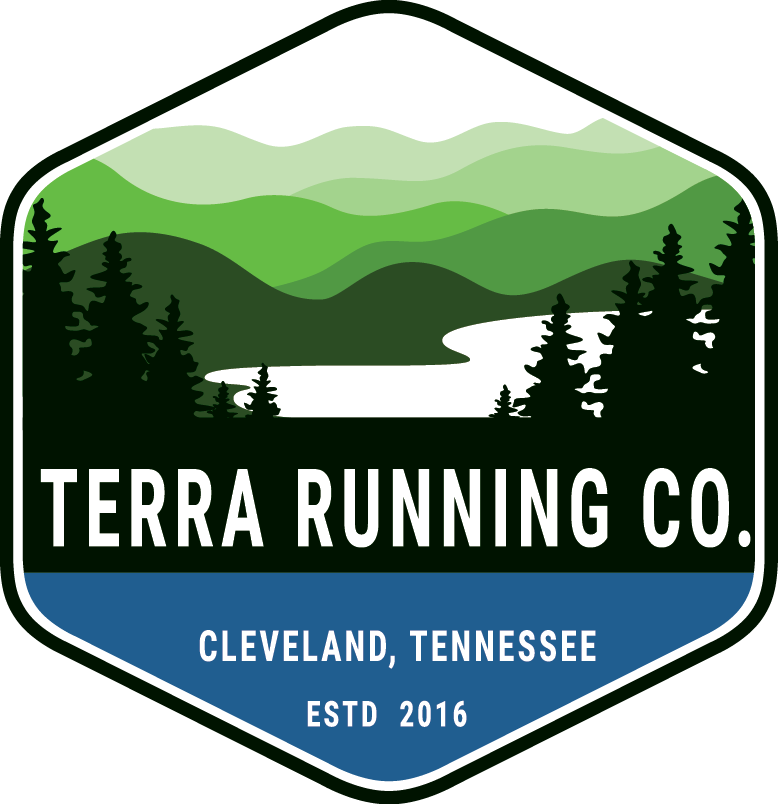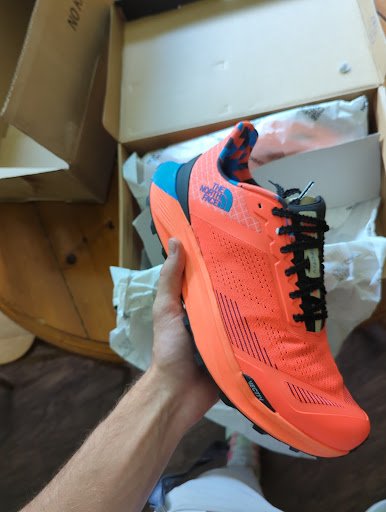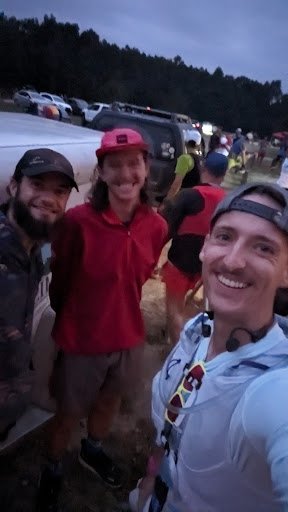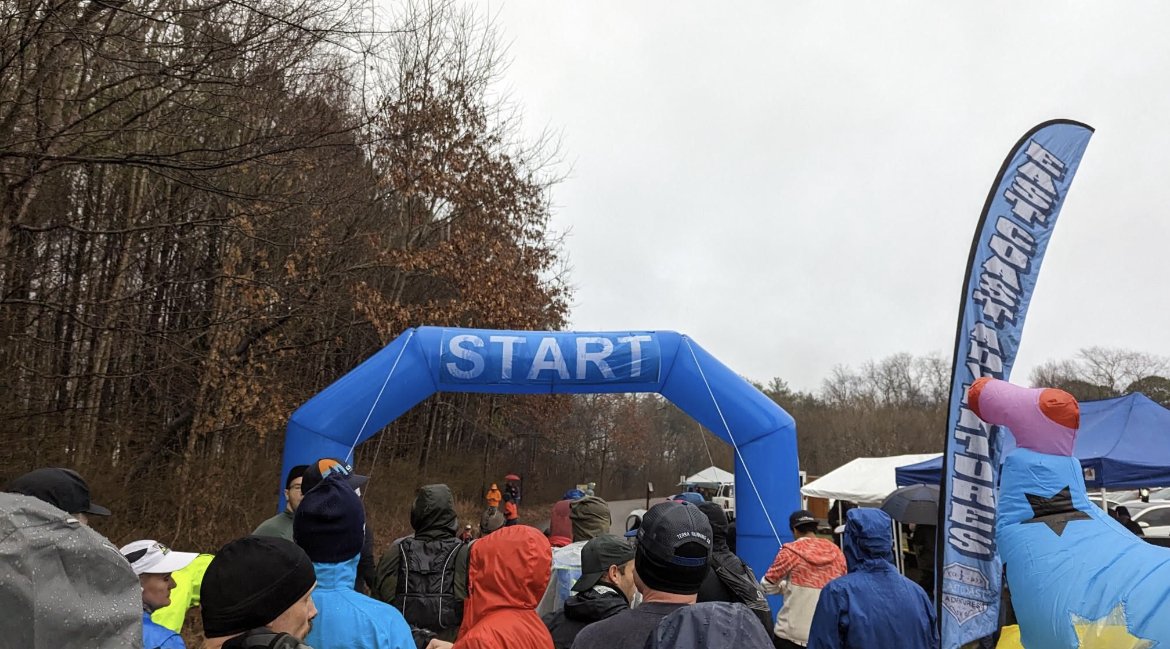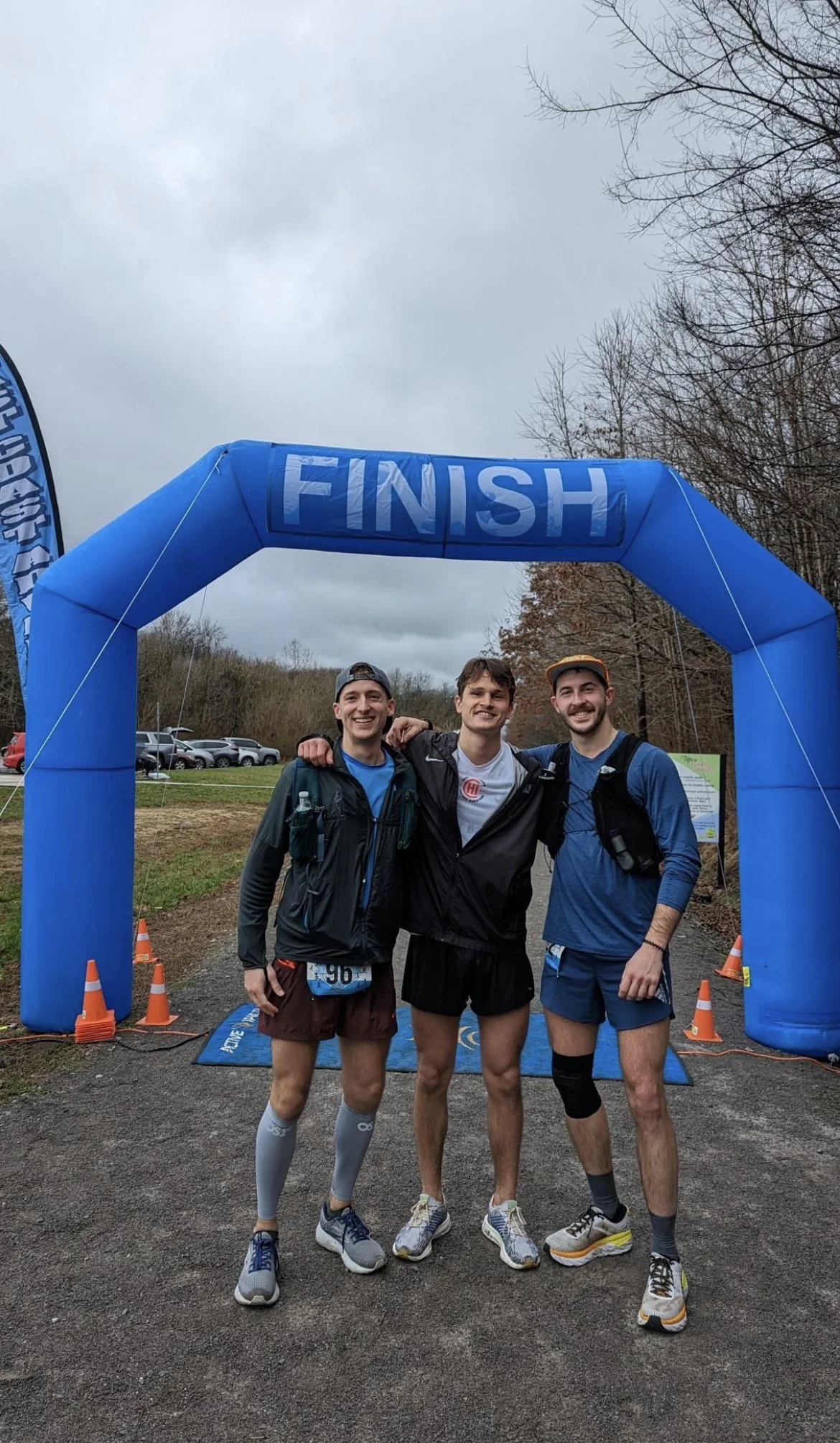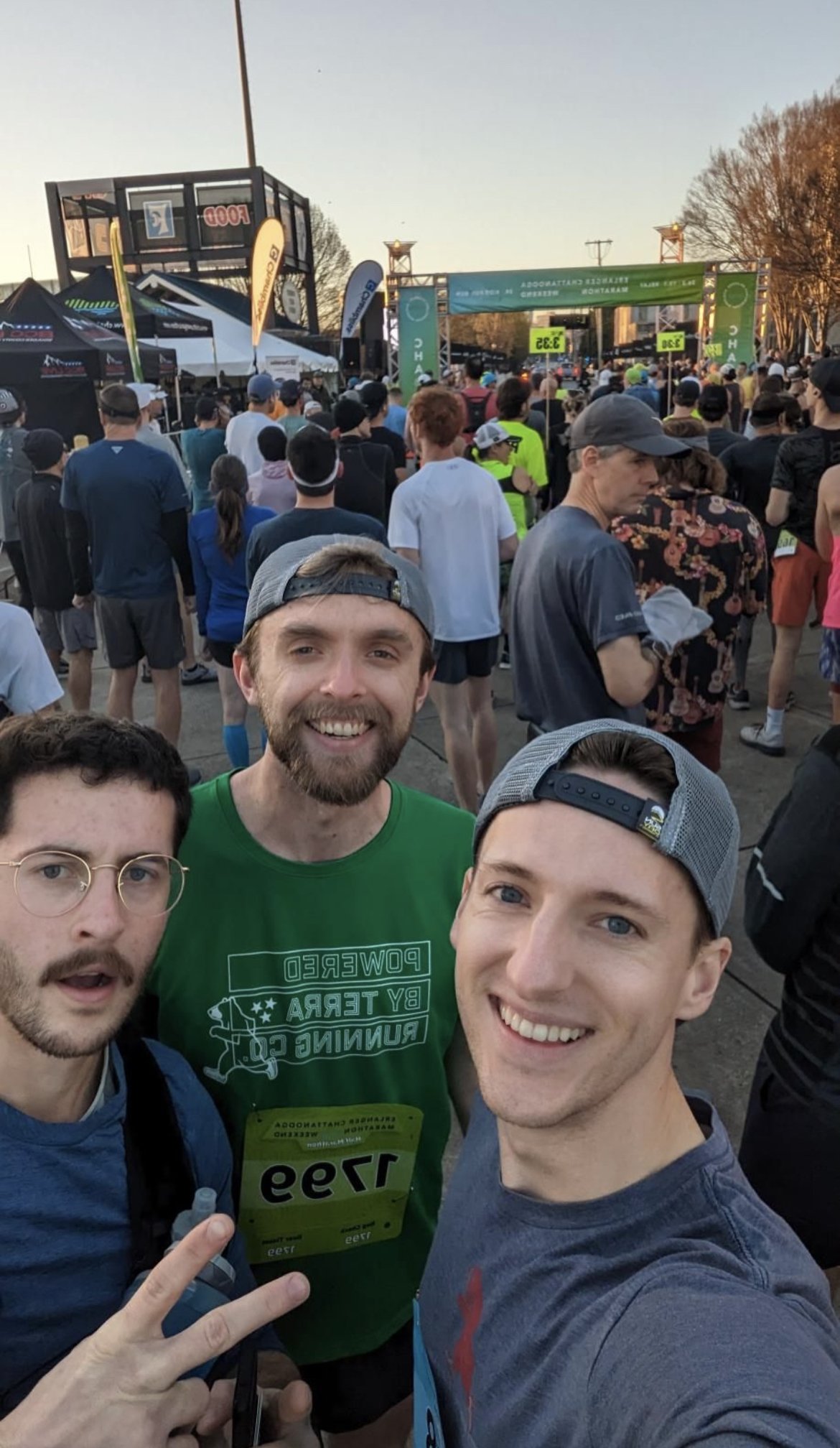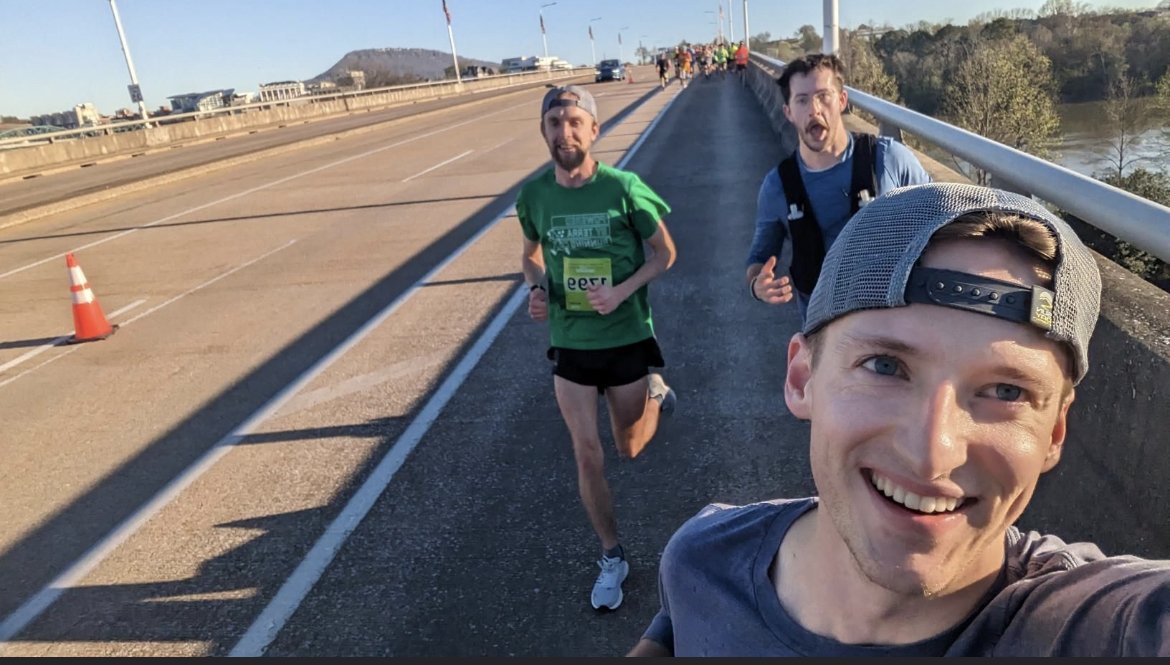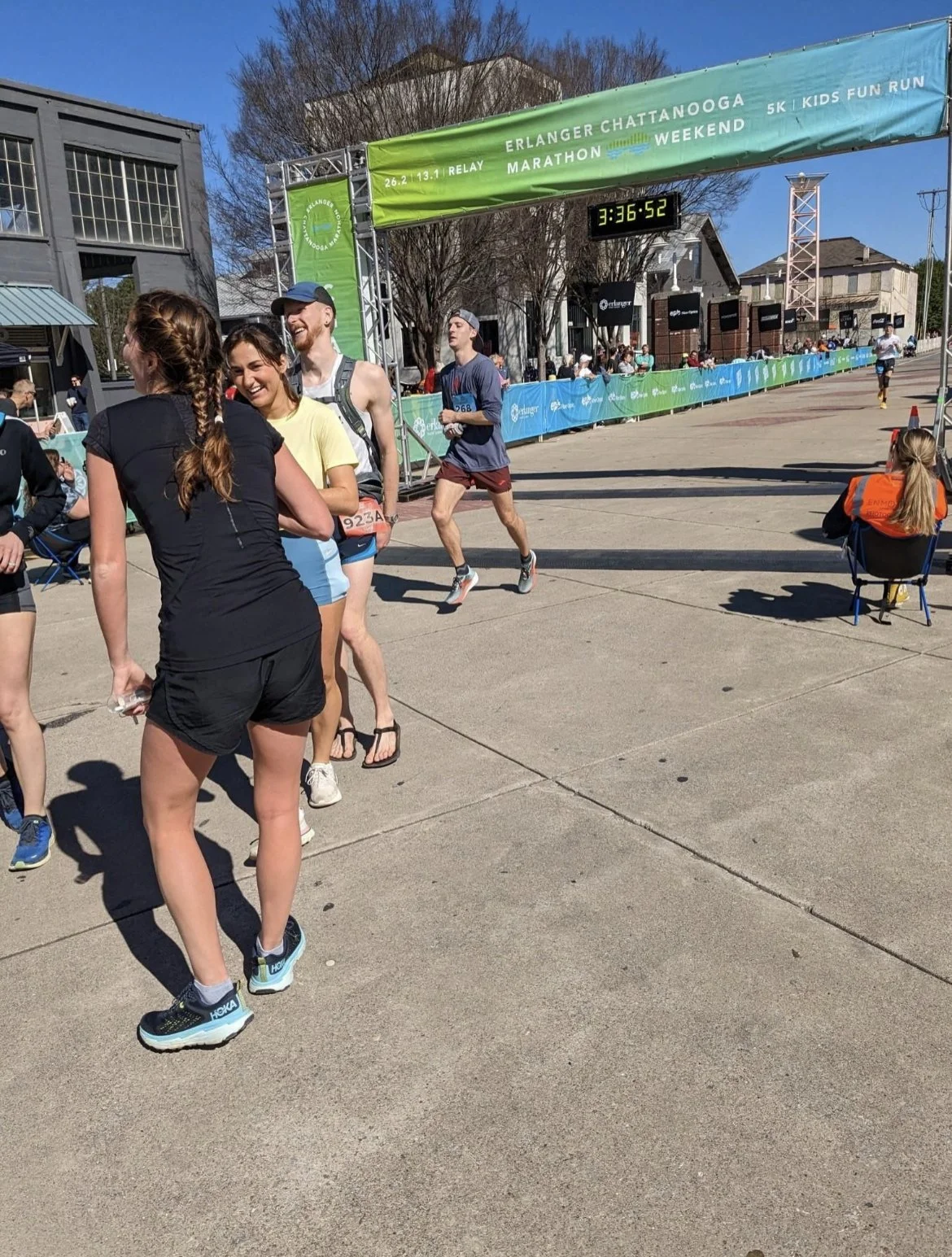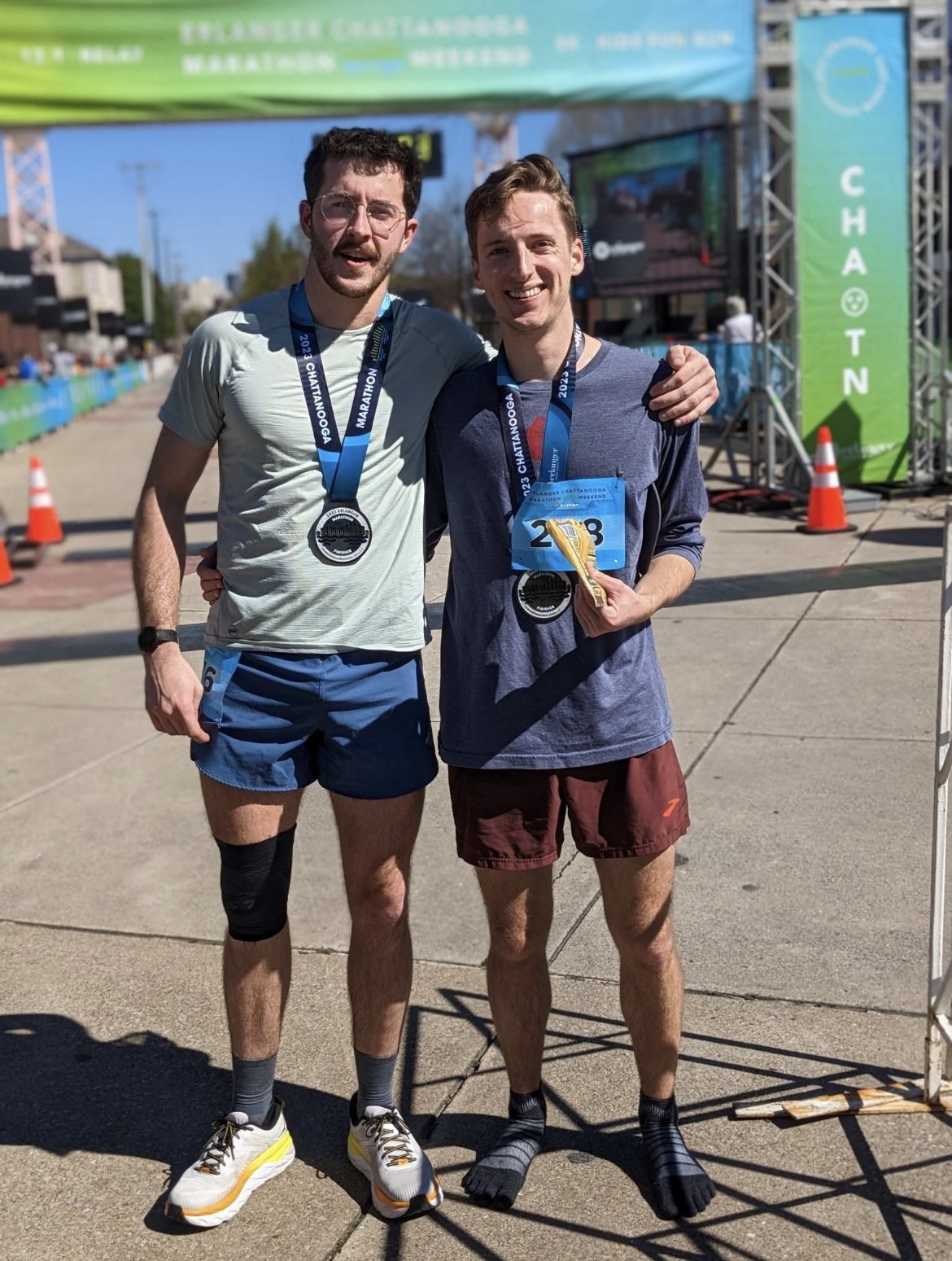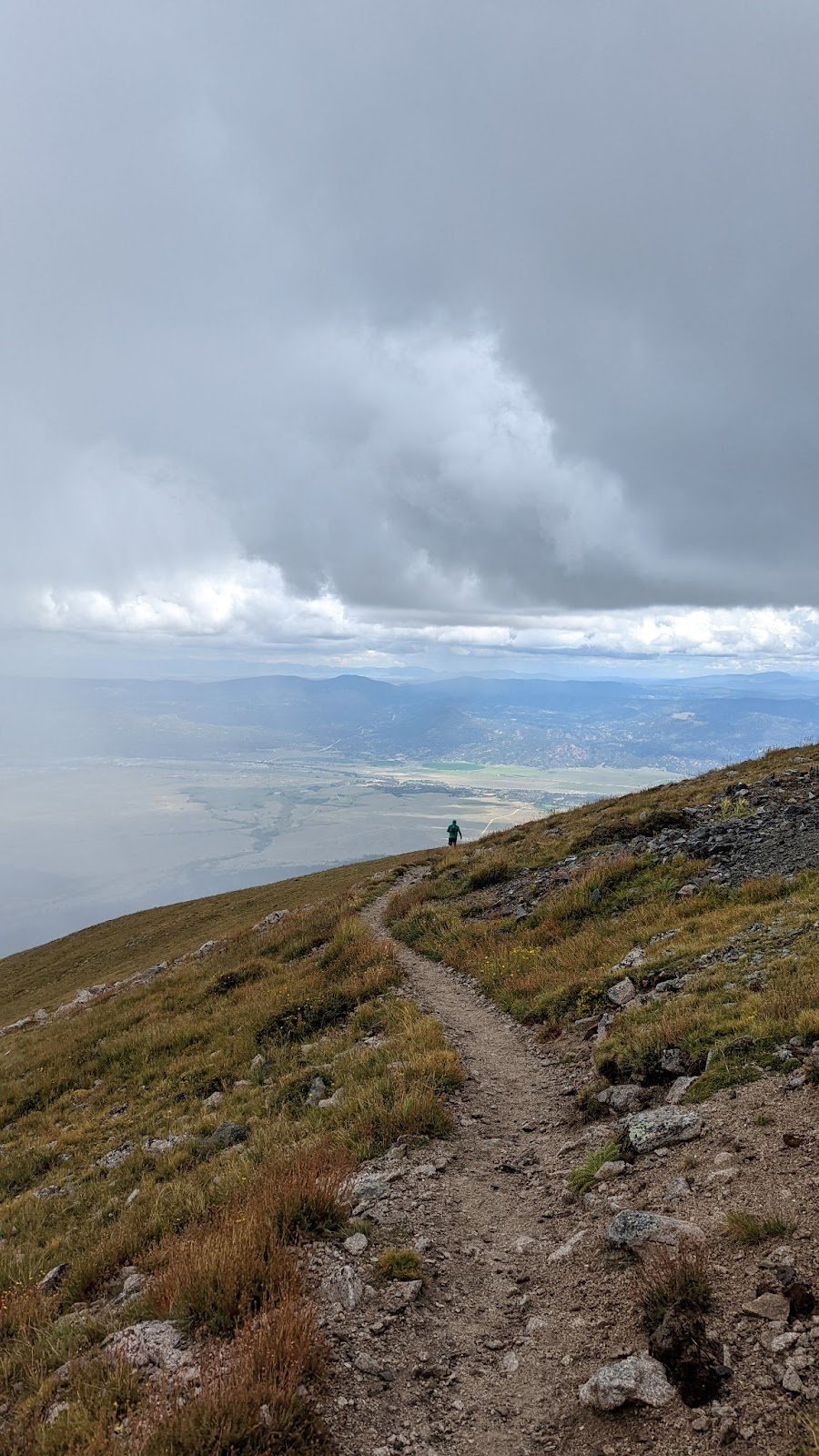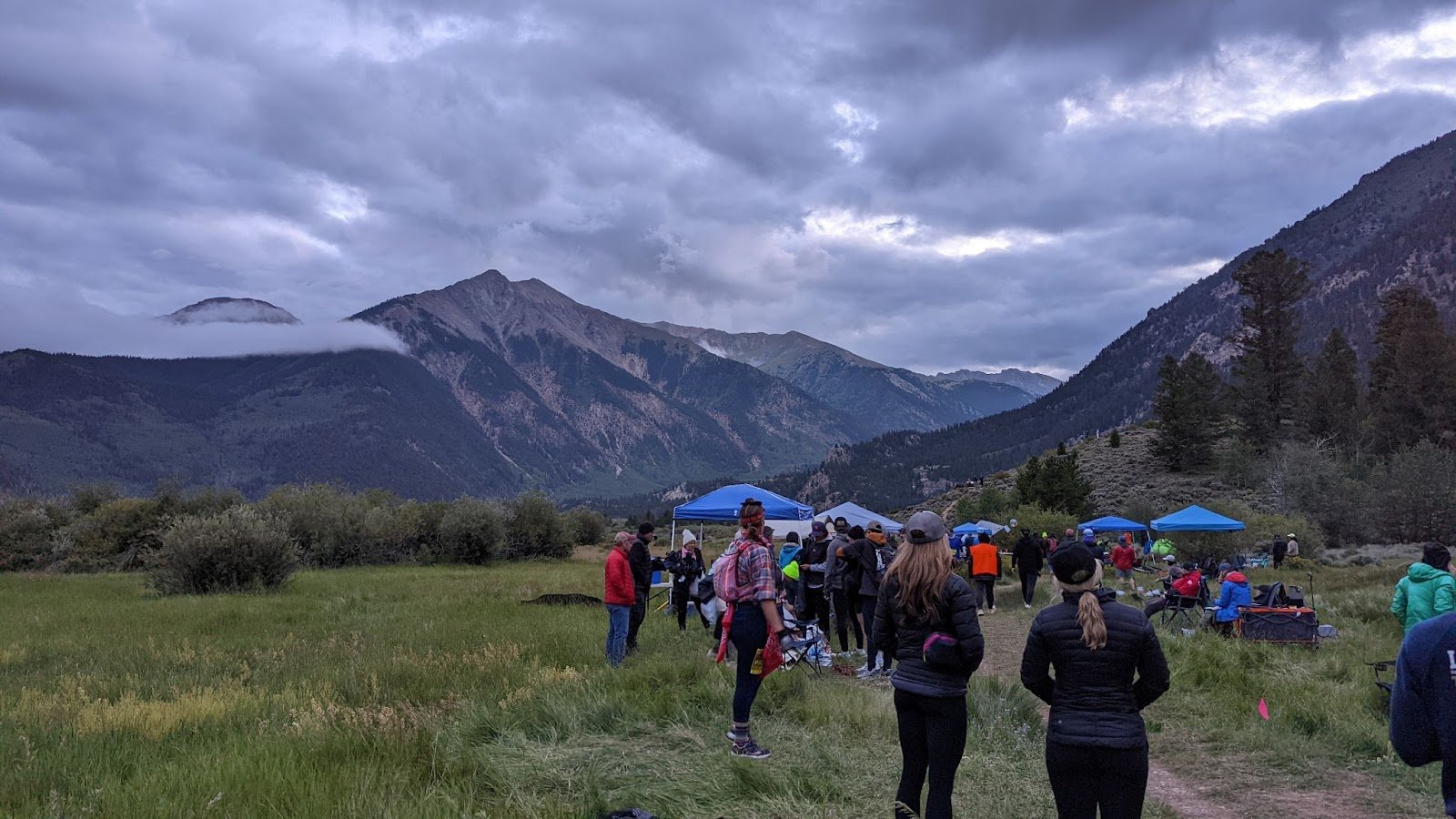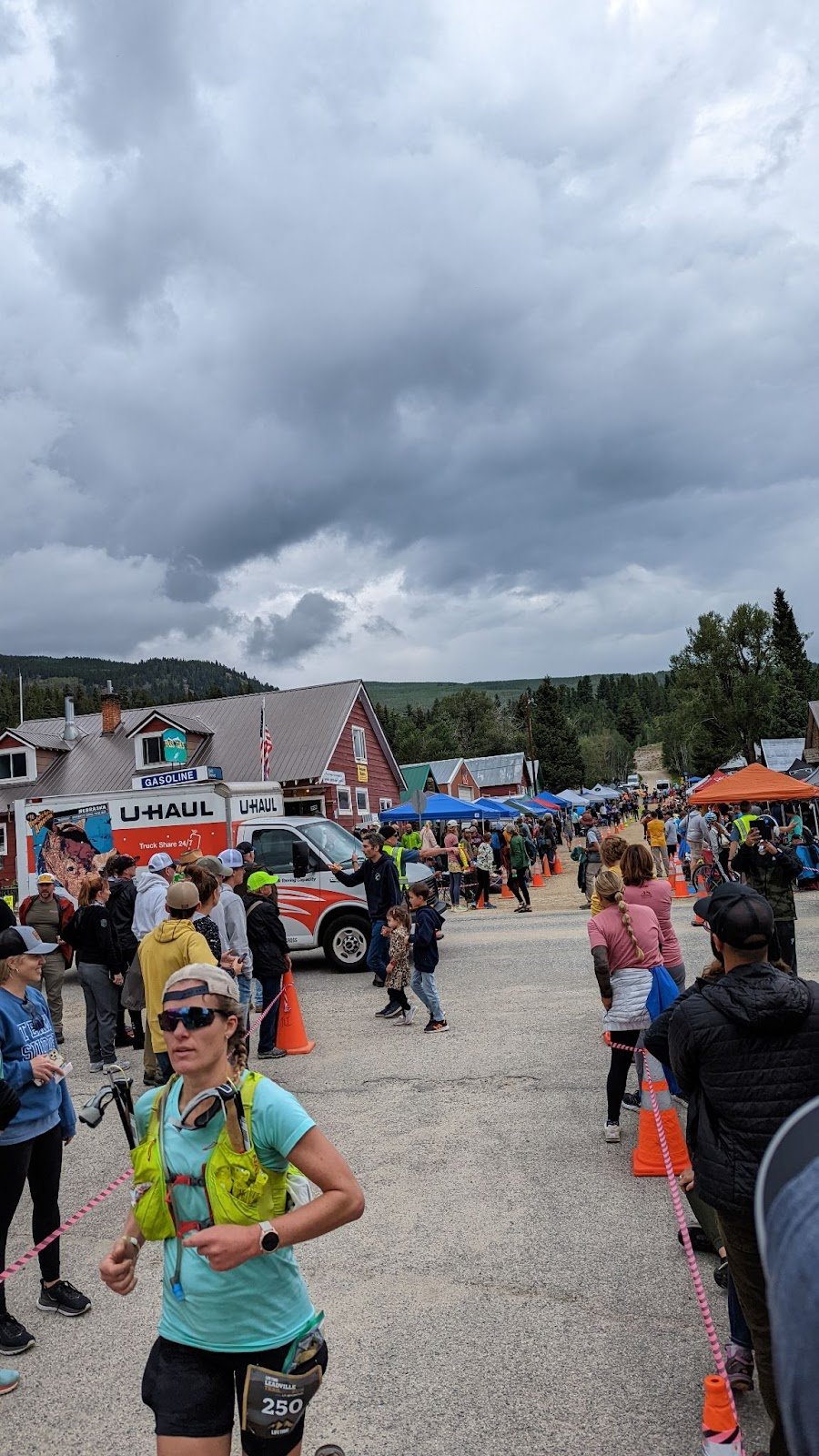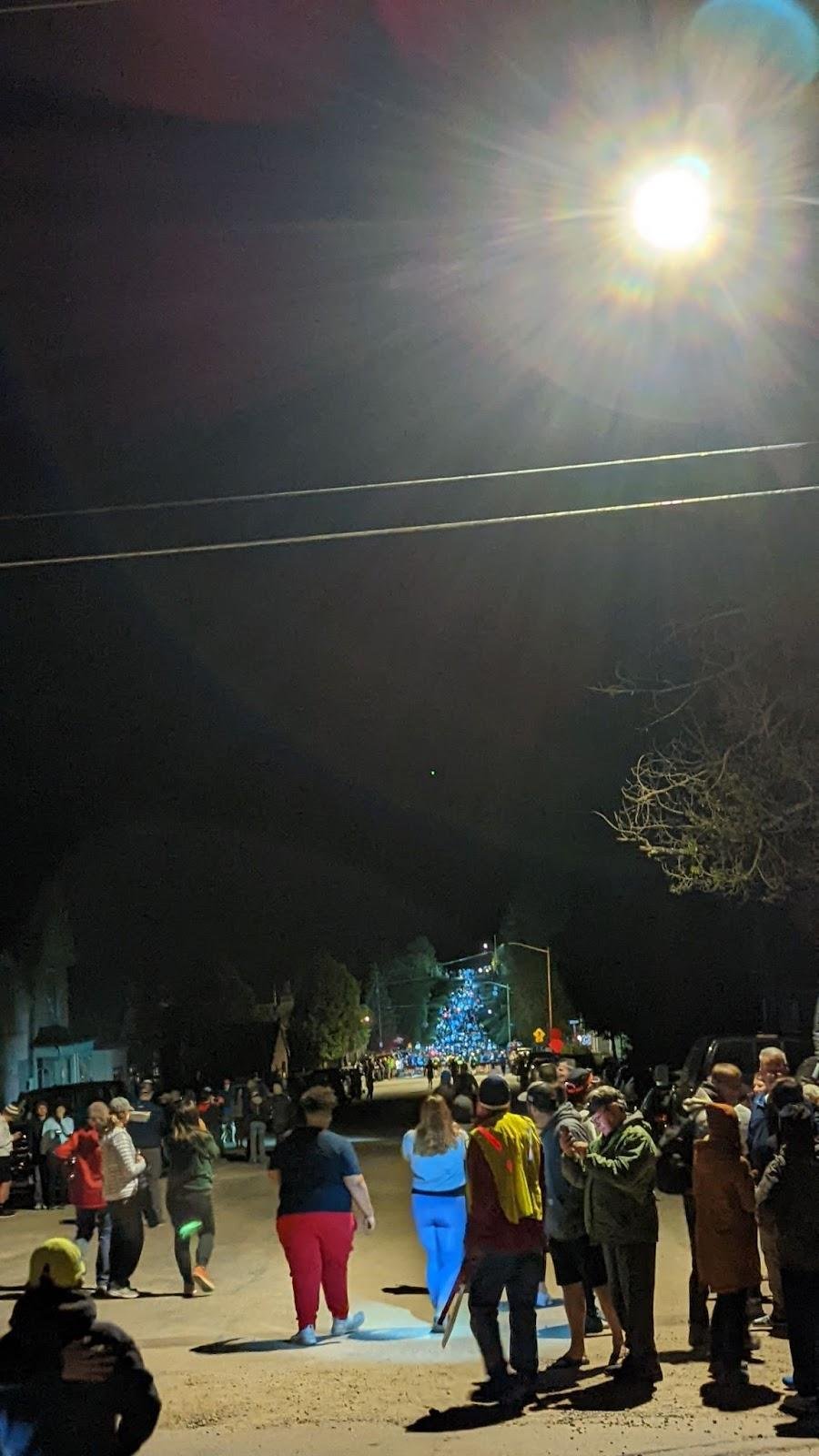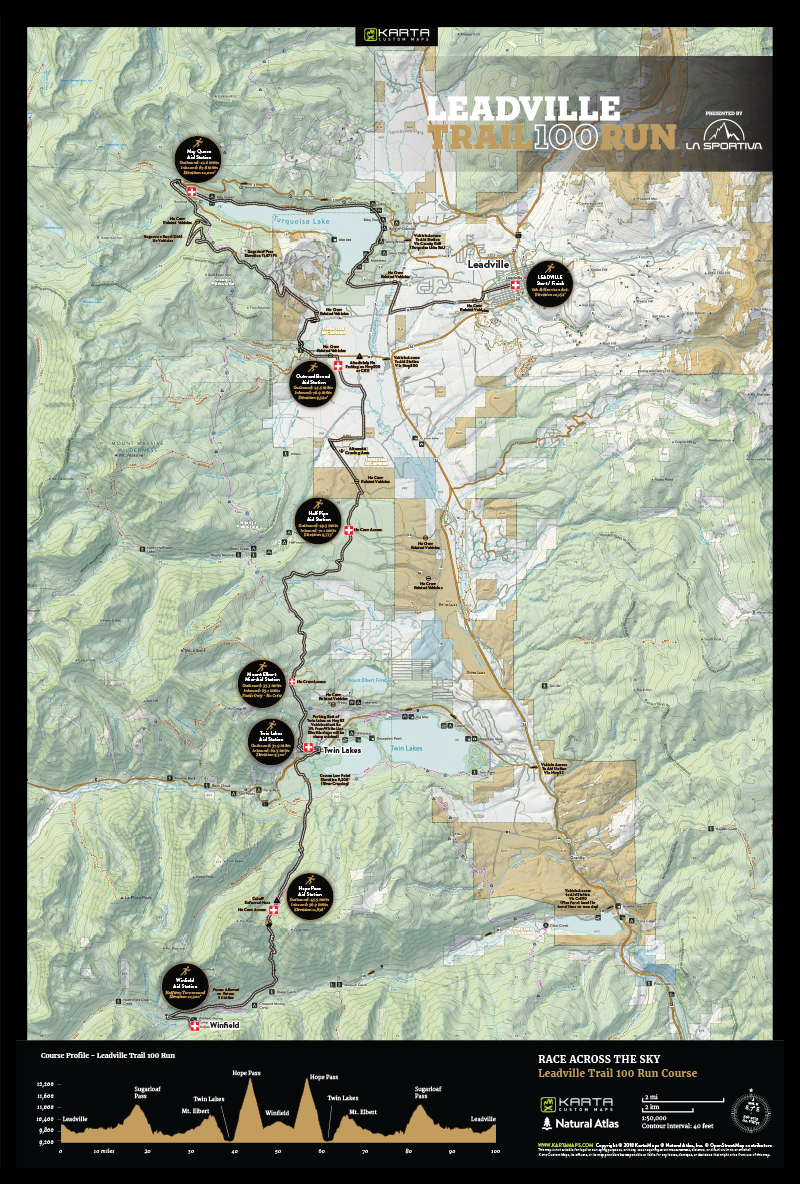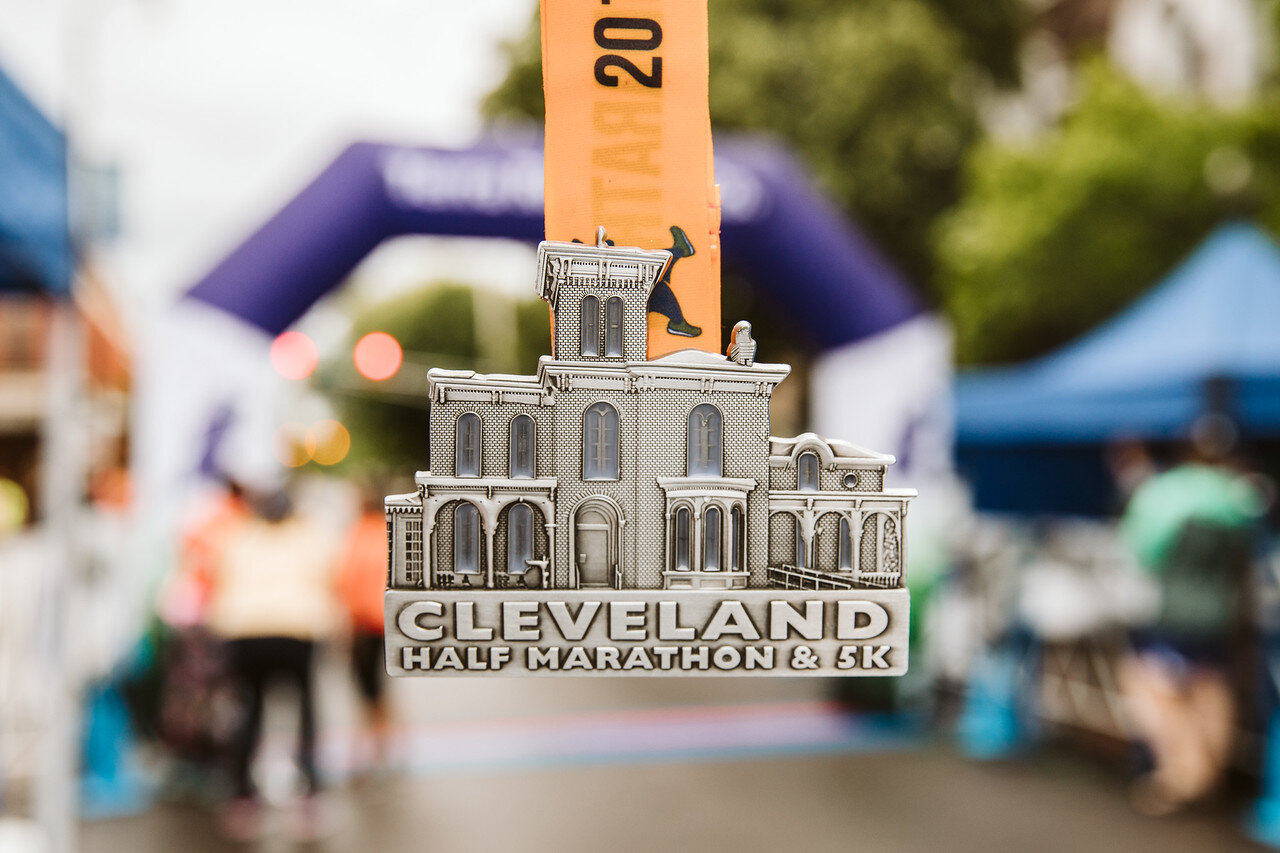
Georgia Jewel 50 Mile
This was so much fun! I went beyond my expectations (which were low). I anticipated walking more and feeling like I needed to stop. Thankfully I never felt this way. Initially, my legs started to hurt, which turned into only hip pain by mile 17. My stomach started to hurt badly to where I thought I might throw up or explode backside. After I took a little break with my crew at mile 30, however, I felt rejuvenated and even energized. I decided to not change shoes at that pit stop and instead only changed socks. I ate a bowl of warm ramen. This bowl of ramen tasted like heaven. I had no cramps or splints, likely because I managed to continually consume 200 calories per hour with a lot of water, and because the uneven terrain of the course reduced repetitive pounding on my joints. I was also extremely happy with my trail shoes, the North Face Vectiv Infinite. These were soft, protective, and even a little bouncy, giving me some speed. I placed 10th overall and 1st in males aged 20-29.
If I could change anything, I would have trained farther out and attempted to get more base mileage under my belt. I only had 45 mile weeks during training and my longest run was 15 miles. I also would have reduced the amount of time I spent at aid stations. I probably spent around 20 minutes at the 30-mile aid station, which ended up costing me the difference between 5th place and 10th. I did poop twice, which I do think was very necessary. Thirdly, my phone completely broke during the race, so I should have brought a waterproof bag for it.
Furthermore, this course was very grueling; the first thirteen miles teased me with an easy trail but later on there were some intense climbs and declines. There was a rock garden that was almost unrunnable, as well as a section with uneven stair steps. It rained most of the race, and I was constantly worried about losing the trail as there were many forks in the trail and side routes. The last quarter mile presented two incredibly steep hills which felt like an additional three miles.
This was my first 50 miler and I definitely hope to run more. I would like to attempt the Istria 100km in April for my next big race.
A huge thanks to all of my support, especially Andrew, Jared, Kyle, and Jon.
Running the Ultramarathon before the Marathon
In what follows I will share my experience training for the Gone Loco 55k and subsequently the Erlanger Chattanooga Marathon…
For context I returned from my travels in Germany on January 12th. The Gone Loco was scheduled for February 12th and the Marathon was March 5th. After recovering from jet lag, I had less than four weeks to prepare for an ultramarathon. I ran some in Germany (see my previous blog), but nothing longer than an eleven mile run and my weekly distance was no more than twenty miles. So I ramped up my training with an increase in the amount of my runs. Running consistently everyday with two break days a week and a long run on the weekends helped to considerably improve my fitness even in a short amount of time. My long runs never went longer than eighteen miles, however, on the first weekend of February I ran back to back long runs, eighteen on Saturday and sixteen on Sunday. The Terra Trot was especially helpful to my training because it simulated a hint of the ultramarathon experience: breaks every few miles and a slow and steady pace. The week before the ultramarathon I only ran once, a little 3 miler. Day of, my two friends (who I convinced to run with me) and I headed up to Athens. We had not run the course before and only heard that it was flat and graveled. Indeed this 55k course is likely the flattest available. Physically, we each felt underprepared, so we took off decently slow, forcing ourselves not to get caught up with the excitement of our first ultrathon. The course lapped three times with two main aid stations at the start and turn around point. 11 miles in, I was feeling good and I stopped to change shoes. The refreshing feeling of cool shoes on my hot swollen feet felt amazing. I took a shot of fireball from the race directors and took off with a new burst of energy. I surpassed my longest run ever on that second lap, and hit my first marathon distance ever. At the aid stations stops, I paused briefly to refill my water bottle. Mile 27 was the first point where I really started to feel pain. I had never experienced a calf cramp before, but my right calf began tweaking with sharp jabs of pain every few minutes. Running back to the finish felt like a painful crawl, but I committed to not walking. Hobbling, I made my way back towards the finish. My watch displayed 34 miles and I knew this 50k race was indeed a 55k. Every .1 mile marker sign began to pass me by slower and slower. I started to heavily favor my left leg as my right leg cramped more frequently, but mentally and physically I had not bonked. I pushed through and made it to the finish line. The last stretch, with the finish line in sight, I actually increased my speed to a full run. David Kyle caught me as I blew into the finish. My friends and family were all there smiling as I teared up every so slightly, and felt the wave of shock rush through my now halted body that had been running for five hours and seventeen minutes. I watched my friends finish soon after me, listened to their similar experiences of pain and suffering but utter joy at the accomplishment.
Three weeks later, I was at the start line for the Erlanger Chattanooga Marathon. I had run roughly five times since the 55k. I had a new pair of shoes, made specially for a faster marathon, the Brooks Hyperion Max, one handheld water bottle, and 8 nutrition gels stuffed into my pockets. This would be my first official marathon. Unlike the ultrathon, I told myself that I would not walk at all, not up hills, and not at aid stations. In fact, probably unwisely I did not use the first few aid stations I saw. The race started with the half marathon runners, so it was crowded and quick. I tried to keep a slow pace at the beginning but ended up going around an 8:30 pace because of the quick flow of runners around me. Brennan, my fellow Terra twin, was with me, running the half-marthon, and Dillon (who ran the Gone Loco with me) was doing the full. Dillon and I were separated around mile seven, however, he stayed relatively close behind me. He was close enough to see the 3hr 40 min pacer and I make the wrong turn at mile 14. My watch started buzzing, and I looked down to see that Dillon was calling me. I answered and he, panting, told me that I had cut off two miles of the course by making the wrong turn, and I, huffing back, argued that the pacer was with me so that it was not possible. But sure, enough, I passed the mile 17 marker and I was only at mile 15 on my watch. So, begrudgingly, I turned around (the pacer and two other runners decided not to turn around, but I did not want to risk cheating). I ran back to a timing mat checkpoint. There was a worker there to whom I explained my situation, while running. I told him I would make up my distance in the parking lot behind him. So, I ran two miles in a hotel parking lot and showed him my watch once I was at 16.8. I continued on, still ahead of Dillon. This was a big setback mentally. I was a bit angry at the pacer for taking us the wrong way, and sore from running tight laps in a parking lot. Nonetheless, I brightened up when I looked around. I was running all alone. I saw no one in front of me and no one behind, and, furthermore, the street ( just past the aquarium) was empty of cars and spectators. It was quiet except for my footsteps, as I climbed the hill to the bridge. I felt pain at the top of my foot at this point, which I assumed to be a stress fracture, regardless, I pushed through, slowing down ever so slightly. I called Dillon back as I ran over the bridge; I told him about my parking lot experience and discovered that he was not far behind. I encountered few runners beyond this point, but when I saw them ahead, I made it my slow and steady goal to catch them. Four miles to the end of the marathon, there was no shade and no spectators. I listened to a song I liked that matched my cadence well, and decided to play it on repeat for the rest of the race. I rounded the final corner and looked way down, probably a half mile, towards the finish line arch. Getting excited, I started to push faster, but the distance was more than anticipated. My final sprint created a forced bonk right as I finished at 3:35:30. I was really happy with my time as I had no expectations, but soon went into a fog of dehydration. Dillon came in soon after.
I ran an ultramarathon before my first marathon, and it worked okay for me. I am happy with my times, and my ability to finish with minimal walking for the ultramarathon and no walking for the marathon. Nonetheless, if I could change the past, I would have sought to prepare much more for these races and distances. Base mileage is incredibly important, and jumping into long distances without proper training can shock the body. I believe I am lucky that I had no long lasting injuries. For the future, I would like to work towards a 70k race ( I am currently looking at the Tushars Mtn race in Utah in July), but I will do so with many 40 mile weeks beforehand, instead of just the one I had before my first ultramarathon.
My First Ultramarathon Experience: The Leadville 100
August 18th I boarded my $30 one-way flight to Denver. I carried a tightly stuffed “personal item” backpack with my On Cloudultras tied to the outside. I had packed as lightly as possible to get the cheapest possible ticket from Knoxville. Andrew, a close friend of mine, was traveling with me, and we were both full of excitement for the adventure that awaited us. The Leadville 100 mile race is a famous trail ultrathon that traverses the Rocky Mountains in central Colorado, running out from the small town of Leadville (elevation 10,000 feet) into the mountains surrounding Mount Elbert all the way to Winfield, Colorado just farther than Hope Pass ( 12,500 feet) and then back to Leadville. Andrew and I were recruited by a runner friend of ours to crew for him during the course of the potentially 30-hour race. The Leadville 100 is well-known throughout the Ultrathon community for being a challenging high altitude race. It was originally one of the first ultrathons in America, and now it remains one of the most popular. Over 700 runners started the race this last August; only a little over 300 finished. Due to its popularity runners have to enter through a lottery system that makes it a little difficult to get in. Typically, runners will recruit teams to crew for them at the aid stations. There are four main aid stations along the course, Mayfield, Outwardbound, Halfpipe, and Twin Lakes. There are other aid stations but these four allow for the most crew. The there-and-back course is the hardest in between mile 43 and 56. This section forces you to climb up Hope Pass, descend down into the valley beyond it, turn around, and climb back over. The fastest runners can rarely pace faster than a fifteen minute mile on these climbs, and the average runner hopes for a forty minute pace. The Twin Lakes aid station is thus one of the most populated aid stations and the most essential for runners, as it is the last stop before the climb outbound and the symbol of achievement inbound. If they can return to Twin Lakes before the cutoff time, they most likely will finish the race. Every aid station has certain cutoff times, where if runners are even a few minutes too late, they will be unable to continue on.
The elevation map shows how difficult the climb and descent is between Hope Pass.
The race began at 3am Saturday morning. The air was chilly but the atmosphere raged with excitement. Runners gave hugs to their crews and lined up in the downtown strip of Leadville. I stood a quarter mile down from the starting line, heard the shot, and watched as the huge mass of headlamps moved towards me in the midst of cheers from the crews. Several minutes passed until all 700 runners had gone by. Andrew and I, with the rest of the crew then loaded back in the car and took off towards Turquoise Lake where we could see the runner headlamps making their way towards the first aid station: Mayfield. Our runner kept on his pre-planned pace and was feeling good when we saw him. The aid station, however, developed a traffic jam of runners and so he waited in a line of runners until seeing us. He took off after the brief stop, making his way up a ridgeline and then descending back down to the Outwardbound aid station. He sped through this one, making up lost time from the earlier aid station. He reached the Twin Lakes aid station around 12:30. This is by far the largest aid station, and a city of tents formed around the trail so that it felt like we were a part of a festival. There was the constant sound of cheering from crews and spectators shouting “good job runner!” There were a variety of sponsor tents from brands like North Face and On. Some of these brands had pro runners competing in the race. Multiple times a runner would come in and immediately a videographer would begin interviewing them. Sometimes crews would prepare meals for their runners. I saw a runner eat a large bean, corn, and rice burrito, others had soup or even chicken. One runner came in, sat down, smoked a cigar, drank a beer, and then kept running. Some runners did not have crews and relied on the bananas and pizza at the aid station. One runner flew from Kenya for the race without a crew (he unfortunately did not finish).
Hope Pass was the next climb after the Twin Lakes stop. The climb is brutal. On top of the pass, there was a little camp set up comprised of the burnt out runners and a few volunteers. There is no road up Hope Pass, so the volunteers use llamas to carry gear to the top. After a break there, the runners carefully descend down the backside to the Winfield aid station. No crews were allowed at this aid station. At this point our runners' phone and watch died. He asked the aid workers the time and then headed back up Hope Pass. At this point in the day, the fastest athletes had already made it back over Hope Pass, through Twin Lakes and the other aid stations and were nearing the finish. In fact, the fastest runner finished in sixteen hours. We, the crew, at Twin Lakes, watched these incredible athletes come through often very spread out. As the sun began to set we started to get nervous about our runner. The cutoff time to the Twin Lakes aid station was 10pm. We had texted with him earlier in the day, but now were hearing nothing about his ETA. I and one of the other crew members started jogging down the trail hoping to find him and encourage him on his way back. It was nearing 9:15 and we still had not sighted him, so we started jogging. Finally, as we came to the main river crossing on the course, we found him walking holding the rope across the river. We were thrilled to see him and tried to see if we could sprint back. Unfortunately, we were a mile and a half out and could only manage a twelve minute pace given his condition after Hope Pass. To say the least we were fifteen minutes too late and our runner had to stop at mile 62. This is not uncommon, however, and many runners decided to stay the night on Hope Pass knowing they missed the cutoff and fearing to descend in the dark.
We decided to get a long nights rest and enjoy the mountains the next day. The Leadville 100 was an incredible experience for me as a crew member. I hope to crew again, however, after seeing so many incredible ultrathon runners, I have been inspired to run it myself one day. Fitness level is not necessarily the key to a successful Leadville 100; nutrition, rest, and altitude conditioning are equally important. One lady had flown from South Carolina two months in advance hoping to acclimate, and even she did not finish. This race is challenging, however, for crews and attempted finishers it felt entirely worth it. There is no shame in not finishing the Leadville 100, and there’s always next time.
